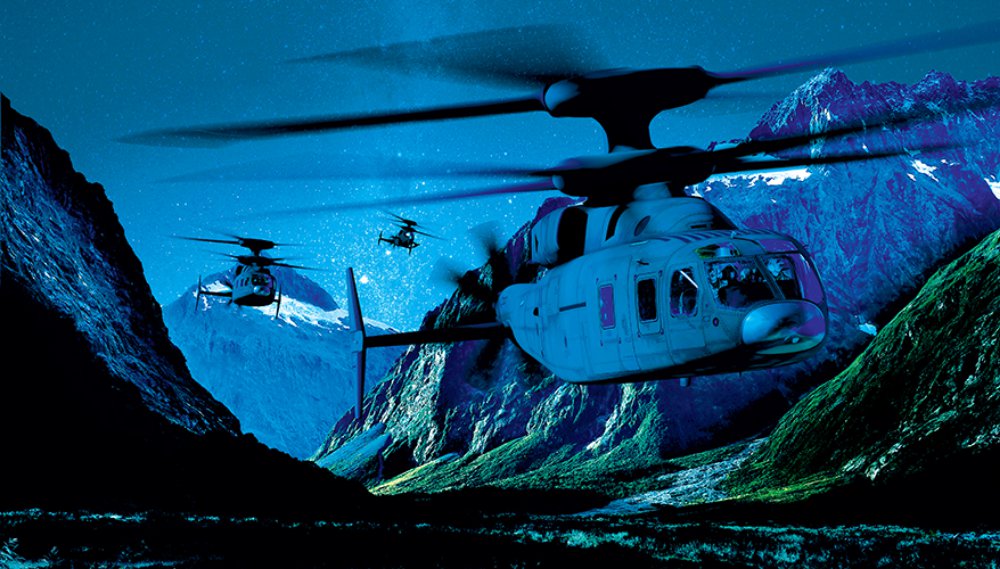The US Army’s Future Vertical Lift cross-functional team wants to integrate new unmanned aerial systems into its family of rotary-wing aircraft, according to the group’s director.
The Future Vertical Lift program is a family of rotary-wing aircraft intended to replace the Army’s UH-60 Black Hawk, AH-64 Apache, CH-47 Chinook and OH-58 Kiowa sometime in the 2030s. Meanwhile, the service is currently running the Joint Multi-Role Helicopter demonstration program to help inform its requirements and reduce technological risk.
Brig. Gen. Wally Rugen said the group — which is one of many that have been set up to pursue the service’s top modernization priorities — will use the UASs with the other aircraft for “advanced teaming.”
The team also wants a clean-sheet designed, optionally manned future tactical reconnaissance aircraft in the family of helicopters that can “hide in radar clutter” and operate in megacities, he noted. The Kiowa is today’s scout helicopter. The Army has made several attempts to replace it over the past two decades, and of late, officials have said its recon mission maybe replaced by unmanned systems. Rugen said the scout-attack mission could be carried out by both manned and unmanned aircraft.
“These two form our advance team, and this advance team needs to deepen the interoperability between our ground force and fires team to be able detect and deliver lethal effects, assess those effects and re-attack if need be,” he said at the Association of the United States Army’s Global Force Symposium in Huntsville, Alabama.
When developing unmanned aerial systems, the team plans to have “multiple form factors,” he noted, but wants key attributes that will allow the service to work in contested environments.
Some of these attributes include swarming, runway-independence and the ability to target long-range precision fires at operational and tactical distances, he said. The team also wants these aircraft to be able to conduct non-lethal actions such as electronic warfare, he noted.
“We want to be able to stimulate— allow an enemy in a contested environment to turn on their radars. We want to be able to spoof those radars, hunt those radars and kill those radars,” he said.
Besides advanced teaming, the team is also examining a future long-range assault helicopter, which would be a fast system with increased protection, he said.
All systems are anticipated to have a resilient open-systems architecture, he noted, which would allow the Army to make quicker upgrades to the aircraft.
Source: National Defense

